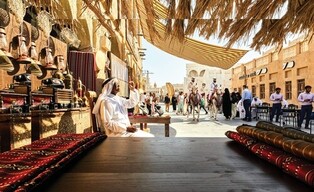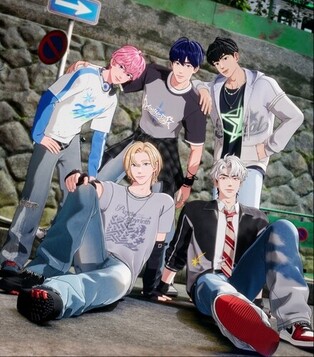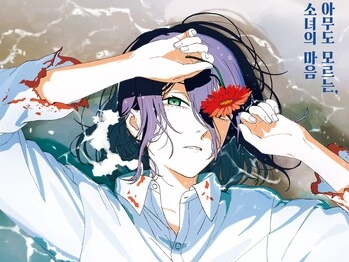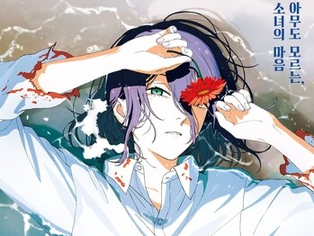(The following article was translated into English by artificial intelligence.)
End is Another Beginning
As the year 2023, the Gyeomyo year, faded away and the year 2024, the Gapjin year, dawned, the feelings of endings and beginnings become especially poignant. At the southernmost tip of the Korean Peninsula lies the town of Haenam, which is also considered the starting point of the peninsula. Reflecting on the notion that endings and beginnings are not necessarily distinct from each other becomes a contemplative exercise. At the entrance of Daehungsa, a prominent temple in Haenam, there is a walking path called the "Long Spring of Nine Forests." It is also known as the Sipri Forest Trail, which translates to "the path to the mountain temple." Along with other local favorites like the Nososa Forest Trail in Buan, the Mufunghansong Forest Trail in Yangsan, the Seonjaegil Trail in Pyeongchang's Mount Odaesan, and the entrance path to Seonamsa Temple in Suncheon, this trail is beloved by both locals and tourists.
The Sipri Forest Trail was adorned with flowering cherry blossoms. Next to the flowers hung clusters of small fruits. It's rare to see both flowers and fruits on most plants, as they typically bloom and fruit at different times. The cherry tree belongs to the category of plants that bloom and fruit simultaneously, a phenomenon known as "meeting of flowers and fruits." It takes about a year for cherry tree fruits to mature. Because of this, one can see both flowers and fruits from the previous year on the same tree. The fresh and firm fruits hanging next to the withering flowers just before falling serve as yet another example of the unity of beginnings and endings.
Red camellias were also peering out from among the trees. These camellias begin blooming in late October and continue until May of the following year.
The name "Long Spring" attached to this forest, which blooms with flowers even in the bitter cold of winter, didn't seem like an exaggeration or flattery. Haenam, located at the southernmost tip of the Korean peninsula, is abundant with subtropical evergreen broad-leaved trees. The Sipri Forest was no exception. It proudly displayed its lush greenery even in the heart of winter, giving no reason to be stingy with praises for its beauty. The end of today is the beginning of tomorrow. "Do not reject what is coming, do not grasp what is going, do not wish ill upon yourself, and do not resent the past." This is a verse from the early Buddhist scripture, the Sutta Nipata. I will bid farewell to the Gyeomyo year with cheer and welcome the Gapjin year with vigor.
Sipri Forest Trail
The name "Gurim," which is the name of the town where Daehungsa is located in Samsan-myeon, Haenam-gun, is derived from the fact that eight ridges of Duryunsan Mountain form a valley where the streams flow down, and the village is densely covered with thickets. The elders believed that the eight forests created the "Nine Forests." Although the administrative name is "Gurim-ri," it is also called "Jangchun-dong" or "Jangchun Village." The Sipri Forest Trail is about 4 km long, starting from the Daehungsa Buddhist Cultural Heritage Information Center and ending at Daeungjeon (Main Buddha Hall).
The trail mainly follows along the valleys. The variety of tree species resulted in a colorful display of autumn foliage, and the forest was so dense that it almost obscured the sky. The abundant camellia trees, the scent of phytoncides emanating from the thick stands of pine trees, and the grove of cherry blossoms all caught the eye. Along the winding valleys were nine bridges, including Hyunmu Bridge and Unsong Bridge, which have been there since ancient times. In modern times, a few more bridges have been added.
As the day approached dawn, the "Nine Forests" welcomed early morning visitors. Some walkers, who appeared to be local residents or participants in temple stays, briskly walked or meditated while covering a distance of about 4 km round trip from their parked cars outside the information center. It seemed rare to start a day with a brisk and healthy walk of about 8 km, cleansing one's thoughts at the temple in the morning and breathing in the deep scent of the forest.
The "Long Spring of Nine Forests" trail can be divided into the section inside the Daehungsa temple compound and the section outside. In the outer section, there are attractions such as the groves of cherry blossoms, pine trees, and camellias, the site of Daehungsa Temple Inn in front of Daehungsa, the Yu Seon-gwan, the first inn in Korea, and Baekhwamun, the White Rock Gate, a historical site of the May 18 Democratic Uprising. In the inner section, you can see features like the paddy fields, the Gate of Liberation, the 500-year-old zelkova tree, the Gumdangcheon stream, and Chimgyeroo.
In the 1980s, there were many lodging facilities around the information center. During the May 18 Democratic Movement, when about 3,000 Gwangju protesters and local residents arrived here, the lodging facilities and residents provided beds and food to the protesters. Yu Seon-gwan, built in 1914, is a charming place where movies like "Seopyeonje" and "The General's Son" were filmed. It is currently operated as a hanok hotel and tea house.
Clouds covering the sky make a canopy over the city
Entering the temple grounds, one is greeted by the Budop Field, where stupas of eminent monks who illuminated Daehungsa, such as Seosan Daesa and Choui Seonsa, are enshrined. There are 56 stupas and 17 pagodas in total. A "budop" is a stupa that enshrines a monk's relics, while a pagoda with inscriptions is erected near the budop. The Seosan Daesa Budop, which stands next to a rock with engravings, is exquisitely crafted and designated as a treasure due to its delicate carving techniques. The inscription on the Choui Seonsa Budop was clearly visible, reading "草衣塔" (Choui Tower).
There are no Four Heavenly Kings gates at Daehungsa, which enshrine illegal deities. Instead, the surrounding mountains of Duryunsan, with their peaks in the east, west, south, and north, such as Cheon-gwansan, Seoneun-san, Dalma-san, and Wolchul-san, guard Daehungsa in place of the Four Heavenly Kings. Park Mi-rye, a cultural tourism guide in Jeollanam-do, says, "As you pass through the Gate of Liberation and lift your head, the ridgeline of Duryunsan and the blue sky fill your heart. When the white clouds gradually float by, you become immersed in an atmosphere as if covered by a cloud canopy."
The trail ends at Daeungbojeon in front of Daehungsa after passing by the Gumdangcheon stream and Chimgyeroo. The inscription on the Chimgyeroo tablet was written by the renowned calligrapher Wongyo Lee of the late Joseon Dynasty. It depicts a scene of flowing water hitting against rocks, conveying a sense of flexibility, freedom, and painterliness. "枕溪" (Chimgye) means "to cover the city." The serene Gumdangcheon, with its clean waters, symbolizes the journey to enlightenment towards Daeungjeon.
Next to Gumdangcheon stands a 500-year-old zelkova tree with intertwined roots. "Yeonri" (연리) refers to the phenomenon where two trees growing close together merge into one. Over the years, as they face the sunlight and lean against each other in the wind, they overlap and become one. When the roots merge, it's called Yeonrigun, when the branches merge, it's Yeonriji, and when the trunks combine, it's called Yeonrimok. A tree where two bodies become one is metaphorically referred to as a "tree of love."
The inscription from novelist Han Seung-won's poem "Legend of Yeonrimok" is poignant: "Our passionate love for each other, where we embrace and struggle, began from the very first starry night."
(The following article was translated into English by artificial intelligence.)
(C) Yonhap News Agency. All Rights Reserved
























![[가요소식] 보이넥스트도어, 신보로 3연속 밀리언셀러 달성](/news/data/20251025/yna1065624915905018_166_h2.jpg)









